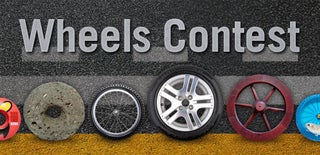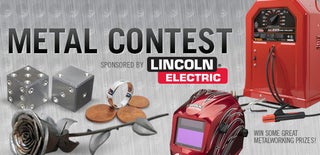Introduction: Make a Racing Powerwheels Jeep
This Instructable will show you how to build a Racing Powerwheels Jeep. The Jeep runs on 24 volt rechargeable batteries and is equipped with disk brakes, digital dashboard featuring voltage and motor temp readouts, pneumatic rubber tires, working headlights and taillights. The Jeep has swappable gear ratios and can reach speeds of around 25-30 MPH with a small adult on board.
Caution - This project is intended for adults...letting a kid on one of these would certainly end in disaster.
Like any project, there are a million ways to go about it...there are ways to make lighter, faster cars. It's all about tradeoffs and what your time, budget, and skill set are.
I built this Jeep in the hopes of participating in the Power Racing Series set of races that are held at Maker Faires around the Country. Take a look at the video of a recent race to give you an idea of what these little cars are capable of. For more info on actual events and rules, check out:
http://www.powerracingseries.org/
For more of my other nutty projects, you can also check out www.jamiepricecreative.com
Attachments
Step 1: Find Your Donor Car
To get started, find a car you like and can fit into (barely). Look in Craigslist, garage sales, trash day for good deals. I scored the slightly weathered blue Jeep for $15. We really only need the body, so if its mechanicals don't work, that is fine.
Next, start stripping off everything you can from under the body. We need to drop as much weight and unneeded parts as possible.
Step 2: Build a Frame
At this point, you have a stripped down Powerwheels body. Next, we need to build a frame to support the body, driver, batteries, and drivetrain.
For the drivetrain of my Jeep, I scored a differential from an ancient electric wheelchair. This already has a differential and a jackshaft/sprocket set. I tossed the motor as it won't be fast enough. For the rest of the frame, I used steel bedframe pieces that I scored cheap at Goodwill.
I ordered go kart spindles off ebay and welded those to a crossbar up front. Actual dimensions of your frame will be dependent on your car size. I also used some smaller steel angle to make two battery holders.
As for steering, I used the steering head and bars from a Goodwill scooter, the bearing steering tube from a Goodwill bike. I ordered some go kart wheel rims off the net. I scored the adjustable tie rods free from a riding mower graveyard (just had to cut/shorten/reweld them. The tires are cheap Harbor Freight rubber tires.
To cut my steel pieces, I used a steel chop saw that makes quick work of it. An angle grinder is great for smoothing rough edges. I used a crappy mig gas welder to weld all the pieces together.
Step 3: Drivetrain
To make your vehicle move, we have to find a DC electric motor. There are tons of options here, but the recurring theme is always power vs weight vs efficiency vs reliability. There are always tradeoffs. In my case, I am using a 12 volt industrial DC motor found through surplus that I am running at 24 volts (roughly 4 horsepower). This motor is quite powerful, but the tradeoff is that it lacks efficiency. It also gets quite hot when pushing it.
Some other cars I have seen are using electric scooter batteries and still others brushless motors. There is even a team using motors from an electric fork lift.
Your car will also need a strong set of brakes. I used disk brakes that were purchased from a scooter store.
Attachments
Step 4: Electronics / Batteries
The vehicle needs a way to apply the battery power to the motor. This is done by using an electronic speed controller (ESC). For my Jeep, I used a Curtis brand ESC pulled from a recycled electric pallet mover. This allows me to run 24 volts and up to about 300 amps. The ESC is controlled by a twist hand throttle from an electric scooter. The batteries are 12 volt sealed lead acid (I use two to make 24 volts). note - batteries is another area where there are lots of choices cost vs weight vs performance.
I used Anderson connectors and thick gauge wire throughout.
For the digital displays on the dashboard, I have one display for battery voltage and another for motor temperature (I installed a thermocouple into the rear motor plate).
There is a large keyed main power cutoff switch installed at the rear of the vehicle.
Step 5: Finishing / Paint
The frame was sandblasted and painted semigloss black. The body was sandblasted (use powdered glass media) and painted to resemble a war era Jeep. The underside of the Jeep is sprayed with truck bed liner. For a floor, I took some sheetmetal and cut and bent it to fit the contour of the bottom. This was sprayed with bedliner and riveted in place.
Step 6: Extras
I wanted this project to have extra wow factor. I hacked two harbor freight 12 volt spotlights for working headlights. These are wired from a switch on the dash and use a small 12 volt battery to run. I also added yellow led marker lights and led tail lights.
I found some war era research that showed the markings on a Jeep and used them to have my buddy create vinyl adhesive graphics.
Upholstery foam and black vinyl were used to create a seat. It is hinged to access the battery area.
A spare tire was added for cool factor.
The project takes a good amount of trial and error. You can experiment around with gear ratios to get better run times, or more top speed, or quicker acceleration.

First Prize in the
Battery Powered Contest

Third Prize in the
Wheels Contest

Participated in the
Metal Contest














